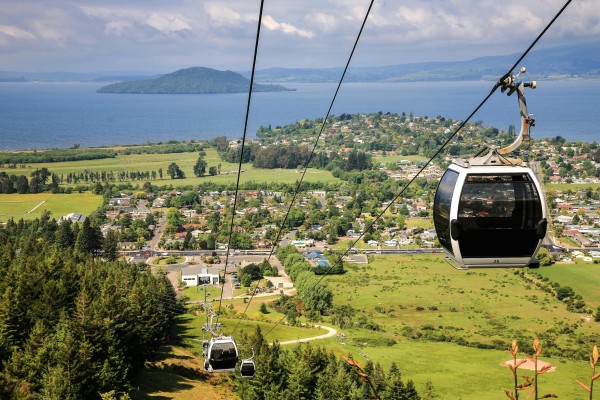This year, construction is expected to start on the Tauhei Solar Farm, a joint venture between First Renewables (a Clarus company) and Harmony Energy.
Located in Te Aroha, between Hamilton and Tauranga, the Tauhei Solar Farm, at the time of commissioning, is anticipated to be New Zealand’s largest solar farm with an installed capacity of 200 megawatts. It will also generate jobs, create wetlands, continue to be productive farming land, and support New Zealand’s efforts to decarbonise the energy system.
More than just a solar farm
The project is designed with ~330,000 solar panels over a ~200-hectare site inside the security fence, with the entire site, including all set-backs, covering ~260 hectares of land – the equivalent to the size of an estimated 371 rugby fields.
But it’s not just the New Zealand energy system that will benefit, the majority of the site will remain in productive farming, switching from dairy farming to sheep farming. The photovoltaic panels will provide shelter and shade for the sheep, while also helping to retaining moisture in the ground during the hottest months of the year. The ability to graze sheep is one of the many advantages of solar energy – it not only supplies clean power, but it can also make farms more productive overall.
Caring for the local environment
Harmony and First Renewables commitment to the environment is reflected in the following on-site initiatives:
· ~22 hectares of ecological and biodiversity enhancements.
· The planting of ~120,000 native plants – which provides screen planting, riparian margins, bio-diversity corridors.
· The establishment of a ~7 hectare wetland – that can help improve local water quality and foster biodiversity.
By prioritising care for the local environment, we hope to see an increasing number of native species thriving at Tauhei. Parts of the site provide habitat for the critically endangered New Zealand long-tailed bat, or pekapeka-tou-roa, and the trees they roost in will be protected.
There will also be extensive planting on the boundary of the solar farm that will screen the solar panels from neighbouring properties. Because the photovoltaic panels are all under three metres high, it will take an estimated three years for boundary planting to establish.
How much energy will Tauhei produce?

The completed Tauhei Solar Farm will generate more than 280 gigawatt hours of electricity per year. That’s enough clean electricity to power around 35,000 Kiwi homes. For comparison, the most recent Census data shows Rotorua has around 25,500 dwellings, so Tauhei could provide enough renewable energy to power the whole of Rotorua and more.
The facility will connect to the Transpower’s 110kV network at the Waihou substation (“WHU”) where the solar power will be transmitted to the national grid.
During its two-year construction phase, Tauhei will create around 568 full-time equivalent jobs in engineering, design and construction, as well as producing permanent full-times jobs once construction is completed.
Clarus’ green energy pipeline
“Utility-scale solar generation presents a significant, complimentary, and largely untapped source of renewable energy in New Zealand, as proven in many markets overseas,” says James Irvine, GM Future Fuels. “This project is an opportunity for us to build on our desire to deliver renewable energy to meet the needs of energy consumers.”
In addition to Tauhei, Clarus has a pipeline of renewable energy projects, including the new biogas upgrade to pipeline facility at Ecogas’ Organics Processing Facility in Reporoa. We are also working on a plan for New Zealand’s first Hydrogen Blend Pilot project where we would blend a small amount of green hydrogen with natural gas in our Firstgas pipeline network.
To learn more about how Clarus is supporting the transition to a net carbon neutral New Zealand, visit Future of Energy.
Harmony Energy’s first steps in New Zealand
Harmony Energy has developed and energised the three largest BESS sites in Europe (by MWh), but the Tauhei will be Harmony’s first renewable energy infrastructure facility to launch in New Zealand.
Excited about such a monumental facility, Harmony Energy Director Pete Grogan said, "The Tauhei Solar Farm represents a groundbreaking moment that will resonate with both the Waikato region and the entirety of New Zealand, instilling a sense of pride. This initiative aligns seamlessly with our aspirations to curtail emissions, fortify energy stability, and combat the adverse effects of climate change.
Moreover, it stands poised to foster a flourishing ecosystem of opportunities for local enterprises and employment, while fostering substantial biodiversity enhancements. Notably, it will seamlessly integrate energy generation with ongoing agricultural activities, embodying a harmonious synergy between sustainability and productivity."

